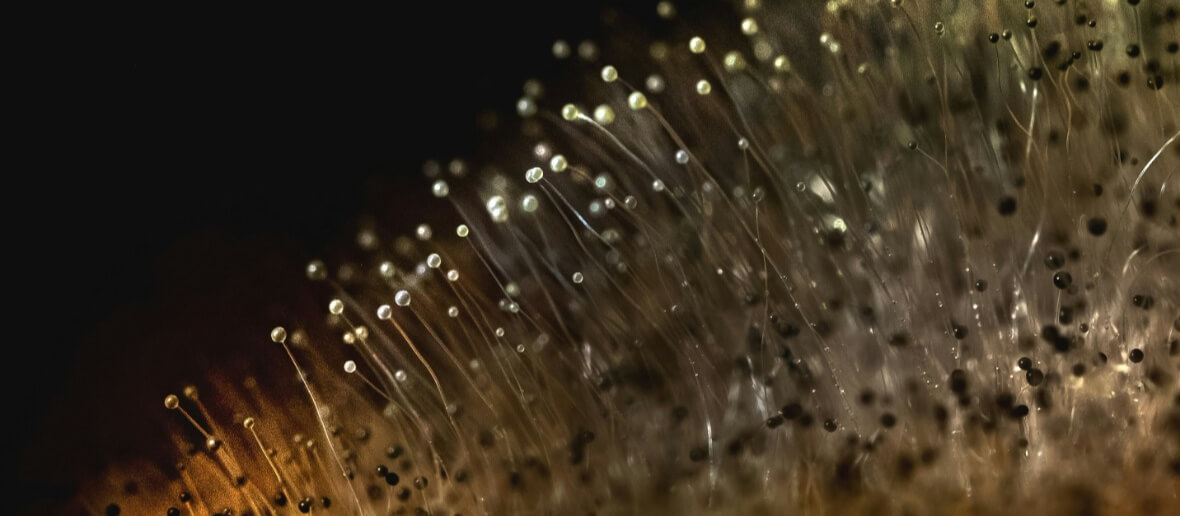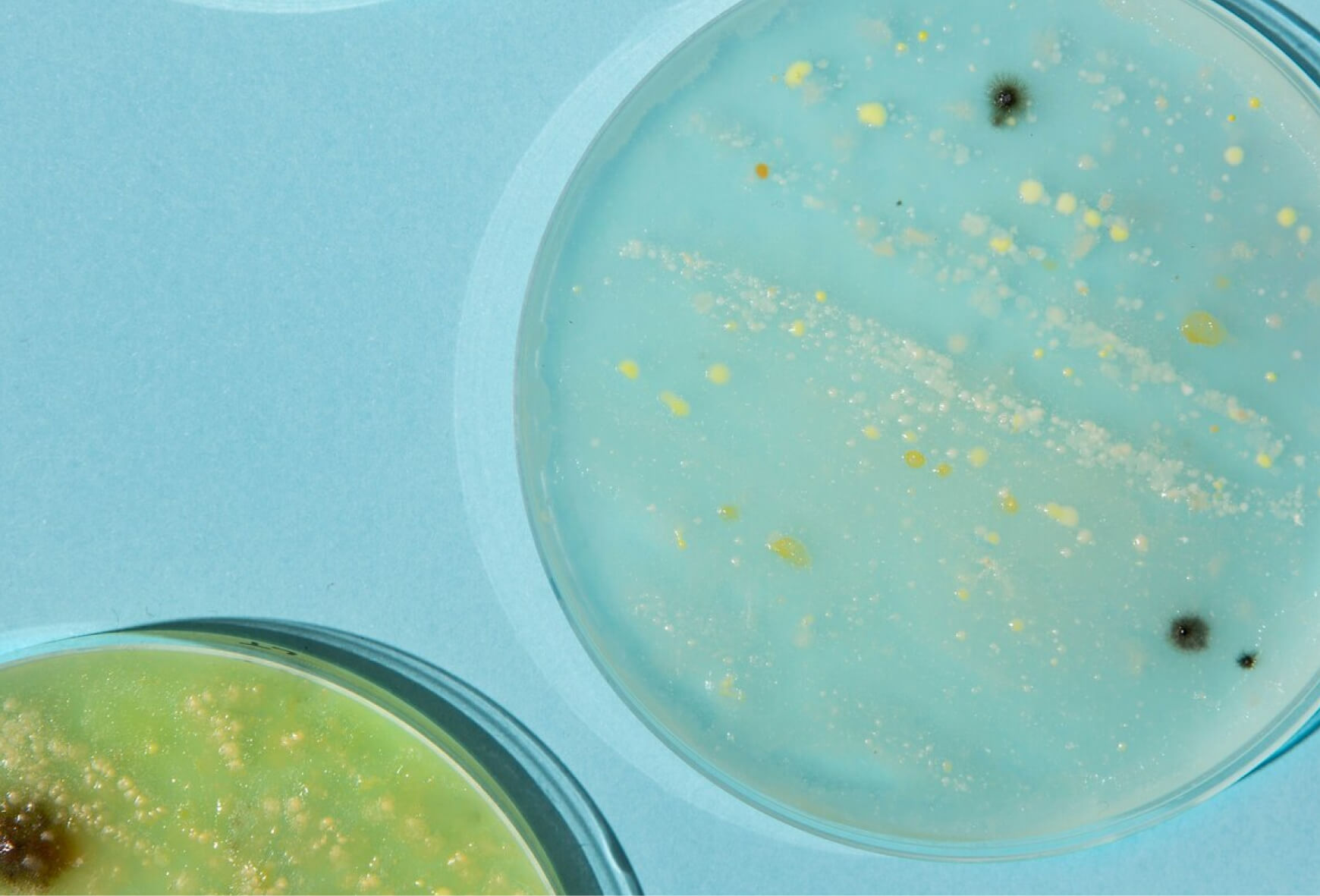Use this form to submit samples to microbiological analysis including the identification of both viable and non-viable spores. Samples such as impact air sampling cassettes, swabs, tape lifts, culture samples or bulk materials can be submitted using this form.
MOLD AND FUNGI TESTING CHAIN OF CUSTODY FORM

SAMPLING FOR MOLD AND FUNGI
The process of sampling for mold and fungi is very nuanced, choosing the right location to sample as well as the appropriate test method can be a daunting task and is best left to professionals. With that in mind there are a number of home test kits available on the market which can help guide you through the mold sampling process. Should you choose to purchase one of these kits, or simply make your own, the following guidelines should be considered for each sample type:
COLLECTING AIR SAMPLES FOR MOLD AND FUNGI TESTING
When collecting air samples for non-culturable (direct examination) based analysis you should use an appropriate air cassette and follow the manufacturer’s instructions. Often times this sampling process will require a special air pump to meet the flow requirements. Make sure to seal the inlet and outlets of the cassette after sampling to prevent contamination of the sample.
When collecting air samples for culture based analysis you should have already purchased an agar media plate, this will be used to collect the spores which fall out of the air. Place the plates on a surface approximately 1 Meter (3 feet) off the ground. Remove the lid and let the plate sit out for 1-4 hours, label the lids and place them face down next to the plate. Once the time is up replace the lid on the plate and seal with tape around the edge of the plate and lid, ensuring the plate and lid are firmly sealed together. Keep the samples in a cool dark place until they can be brought in to the laboratory, samples should be submitted as soon as possible.
COLLECTING BULK SAMPLES FOR MOLD AND FUNGI TESTING
Bulk samples are quite simply pieces of material which have mold or fungi growing on them. When collecting a sample of bulk material ensure you are wearing appropriate personal protective equipment to protect yourself from any exposure caused by disturbing the material. Using a clean knife cut a small piece approximately 10cmx10cm (4 sq inch) and place it in a clean zipper sealing plastic bag.
Note: Materials which may contain asbestos such as drywall, plaster, flooring, popcorn ceilings or other materials should be tested by a professional as proper procedures are required to protect against contamination.
COLLECTING TAPE LIFT SAMPLES FOR MOLD AND FUNGI TESTING
Tape lifting is a relatively straightforward procedure whether you are using purchased tape lift slides or simply a piece of scotch tape, the process remains the same. Taking a piece of tape 5-10cm long (2-3 inches) press the sticky side against the surface you want to test firmly. Avoid any rubbing motion as this may damage the samples. Once you have firmly pressed the sticky side against the surface carefully remove it and stick it in the inside of a sealable plastic bag trying to keep the tape flat against the inner surface of the bag. The spores and other particles of interest will be stuck in the adhesive of the tape and if this adhesive layer becomes damaged then that section of the sample cannot be analyzed.
COLLECTING SWAB SAMPLES FOR MOLD AND FUNGI TESTING
Swab sampling kits are one of the more common types of surface sampling products. Swab samples can provide some information about a colony without the asbestos risk of bulk sampling procedures. When collecting swab samples it is important to use proper technique. Before taking the sample consider the surface; is the surface wet or dry? If wet you should use a dry sterile swab, if the surface is dry you should use a wet sterile swab. When taking the actual sample it is important to roll the swab along the surface, wiping or streaking the surface will disrupt the fragile characteristics of the mold structures and make the analysis less accurate. After the sample has been taken return the swab to the tube it came in and bring it in to the lab promptly to avoid sample degradation, store samples in a cool dark place until they can be brought in.

INFO ABOUT MOLD & FUNGI
WHAT IS MOLD & FUNGI?
Mold is a term referring to a group of fungi which grow in the form of multi-cellular structures called hyphae which will then form conidia and spores. Molds differ from other fungi which are typically single celled such as yeasts. The spores produced by the conidia are how a mold spreads throughout its environment. Mold spores are an important part of the global ecosystem, they can be found both indoors and outdoors and have colonized essentially every continent on the planet. While the amount of mold spores in the air is typically low enough not to cause any issues the invention of indoor heating and plumbing has made molds a formidable presence in homes across the globe.
The growth cycle of a typical mold colony starts at the spore, which is a microscopic particle which contains all the information and resources required to start a new mold colony. Spores are spread through the air by wind or forced ventilation systems, mold spores can also attach themselves to clothing, pets, building materials or even your skin (which needs to have a fairly diverse eco-system to maintain your health). Once a mold spore lands somewhere moist it will begin to grow and divide, producing structures called “hyphae”-long filament like structures which will appear as a fuzzy patch once they have grown enough. When the conditions are just right and the mold colony is particularly happy it will begin to produce spores at the ends of the hyphae in specialized structures called “conidia”. These conidia will start shedding spores, which will be picked up by moving air, pets or other means and land on another surface, if that surface has the moisture and food the mold needs it will start a new colony and the cycle continues. Mold spores are extremely resilient, with some able to survive long dry periods and many others that are resistant to even the strongest cleaning chemicals.
While molds are an integral part of the microscopic world, they can be a nuisance or health hazard when they invade a living space. Large colonies of mold are unsightly, often producing large brown, black, green, blue or white stains on surfaces and large colonies have also been suspected of causing health problems. At present there is no conclusive evidence for or against the hazards of molds, however it is generally recommended that any mold growth is dealt with promptly as it can produce a number of unwanted smells and can damage the surface it is growing on.
HEALTH EFFECTS OF MOLD EXPOSURE
As stated above there has not been a causal link established between mold or fungi and negative health effects except in immunocompromised individuals. With that in mind there have been a number of reports which seem to show a link between mold exposure and asthmatic response in individuals who already have asthma. Mold exposure may also cause symptoms which resemble allergic reactions such as a runny nose, cough or difficulty breathing and irritation of the eyes, although the fact that molds are abundant both indoors and outdoors makes any studies relating to the specific health effects of indoor mold growth difficult. Despite the lack of causal evidence mold growth is unsightly, produces a number of offensive odors and damages building materials, for these reasons alone it is highly recommended that any significant mold growth is dealt with promptly by professionals.
MOLD AND WORKSAFEBC
The lack of causal evidence between mold and heath problems has led to somewhat ambiguous regulations around mold detection and remediation. With that in mind it is the recommendation of WorkSafeBC, Health Canada and most municipalities that mold or any water damaged material is cleaned and sanitized properly or removed if the damage is great enough. There may be some re-occupation restrictions when a living or working space has been contaminated with mold and it is recommended that any water damage be inspected by a certified professional to provide guidance on clean-up or remediation. There is a wealth of information about mold available to interested parties, including the following:
Mold Hazards (WorkSafeBC)
Indoor Air Quality (CCOHS)
Mould and Your Health
Indoor Air Quality (Health Services BC)
FAQ
Yes, Sarcova accepts all samples which meet the requirements for the analysis method being performed. If you have any questions about making sure your mold samples are as representative as possible feel free to get in touch with us and we will provide as much information as possible.
This can be a very difficult question to answer and will depend on a number of factors at the site. As a general rule visible mold colonies should be tested using a bulk, swab or tape lift technique and air samples should be taken from any sites where water damage has occurred. The ubiquitous nature of mold makes testing a nuanced process which should be performed by a professional.
These two classification of sample split mold testing into two categories: mold that is present and can form colonies and mold that is present but may be dead. Largely the two tests can be understood as follows:
Culturable- Samples are given ideal nutrition and environmental conditions and allowed to grow, growing colonies are observed and quantified giving information about the living mold colonies in the sample and approximately how healthy these colonies are.
Non-culturable: Samples are examined directly, any particles or spores will be characterized to the most specific level possible, however sometimes dead cells will be counted. These tests tell you more about the mold history of the space and tends to capture a wider variety of mold spores. Non-culture based tests are much faster, however they provide less well-rounded assessments of the area.
